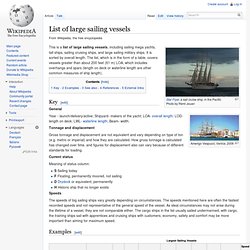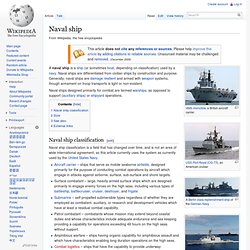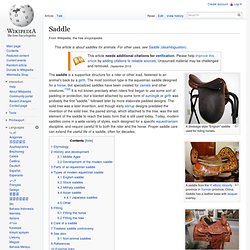

List of large sailing vessels. Star Flyer, a sail cruise ship, in the Pacific Photo by Rémi Jouan Amerigo Vespucci, Venice, 2006 This is a list of large sailing vessels, including sailing mega yachts, tall ships, sailing cruising ships, and large sailing military ships.

It is sorted by overall length. The list, which is in the form of a table, covers vessels greater than about 200 feet (61 m) LOA, which includes overhangs and spars (length on deck or waterline length are other common measures of ship length). Key[edit] General Year - launch/delivery/active; Shipyard- makers of the yacht; LOA- overall length; LOD- length on deck; LWL- waterline length; Beam- width. Tonnage and displacement Gross tonnage and displacement are not equivalent and vary depending on type of ton (e.g. metric or imperial) and how they are calculated. Current status. Sailing ship. Specifications[edit] Ocean journeys by sailing ship can take many months, and a common hazard is becoming becalmed because of lack of wind, or being blown off course by severe storms or winds that do not allow progress in the desired direction. A severe storm could lead to shipwreck, and the loss of all hands.
Naval ship. A naval ship is a ship (or sometimes boat, depending on classification) used by a navy.

Naval ships are differentiated from civilian ships by construction and purpose. Generally, naval ships are damage resilient and armed with weapon systems, though armament on troop transports is light or non-existent. Naval ships designed primarily for combat are termed warships, as opposed to support (auxiliary ships) or shipyard operations. [edit] Naval ship classification is a field that has changed over time, and is not an area of wide international agreement, so this article currently uses the system as currently used by the United States Navy.
See also Hull classification symbol Size[edit] In rough order of tonnage (largest to smallest), modern surface naval ships are commonly divided into the following different classes. Some classes above may now be considered obsolete as no ships matching the class are in current service. Western saddle. A western-style show saddle with silver decoration Western saddles are used for western riding and are the saddles used on working horses on cattle ranches throughout the United States, particularly in the west.

They are the "cowboy" saddles familiar to movie viewers, rodeo fans, and those who have gone on trail rides at guest ranches. This saddle was designed to provide security and comfort to the rider when spending long hours on a horse, traveling over rugged terrain. The design of the Western saddle derives from the saddles of the Mexican vaqueros - the early horse trainers and cattle handlers of Mexico and the American Southwest.
Today, although many Western riders have never roped a cow, the western saddle still features this historical element. The Western saddle is designed to be comfortable when ridden in for many hours. Saddle. A dressage-style "English" saddle used for riding horses.

Etymology[edit] The word "saddle" may originate from the Latin word "sella"[3] or from the Protogermanic sathulaz.[4] History and development[edit] There is evidence, though disputed, that humans first began riding the horse not long after domestication, possibly as early as 4000 BC.[5] The earliest known saddle-like equipment were fringed cloths or pads used by Assyrian cavalry around 700 BC. These were held on with a girth or surcingle that included breast straps and cruppers.[6] From the earliest depictions, saddles became status symbols.
Early solid-treed saddles were made of felt that covered a wooden frame. Reconstructed Roman military saddle (4-horn design) Middle Ages[edit] A saddle commonly seen in the 16th and 17th centuries. Saddles were improved upon during the Middle Ages, as knights needed saddles that were stronger and offered more support. Development of the modern saddle[edit] The English hunting saddle. Horse-drawn vehicle.
A horse-drawn vehicle is a mechanized piece of equipment pulled by one horse or by a team of horses.

These vehicles typically had two or four wheels and were used to carry passengers and/or a load. They were once common worldwide, but they have mostly been replaced by automobiles and other forms of self-propelled transport. General[edit] A two-wheeled horse-drawn vehicle is a cart (see various types below, both for carrying people and for goods). Four-wheeled vehicles have many names – one for heavy loads is most commonly called a wagon. Horses in warfare. The first use of horses in warfare occurred over 5,000 years ago.

The earliest evidence of horses ridden in warfare dates from Eurasia between 4000 and 3000 BC. A Sumerian illustration of warfare from 2500 BC depicts some type of equine pulling wagons. By 1600 BC, improved harness and chariot designs made chariot warfare common throughout the Ancient Near East, and the earliest written training manual for war horses was a guide for training chariot horses written about 1350 BC.
As formal cavalry tactics replaced the chariot, so did new training methods, and by 360 BC, the Greek cavalry officer Xenophon had written an extensive treatise on horsemanship. The effectiveness of horses in battle was also revolutionized by improvements in technology, including the invention of the saddle, the stirrup, and later, the horse collar. Horses were well suited to the warfare tactics of the nomadic cultures from the steppes of Central Asia.